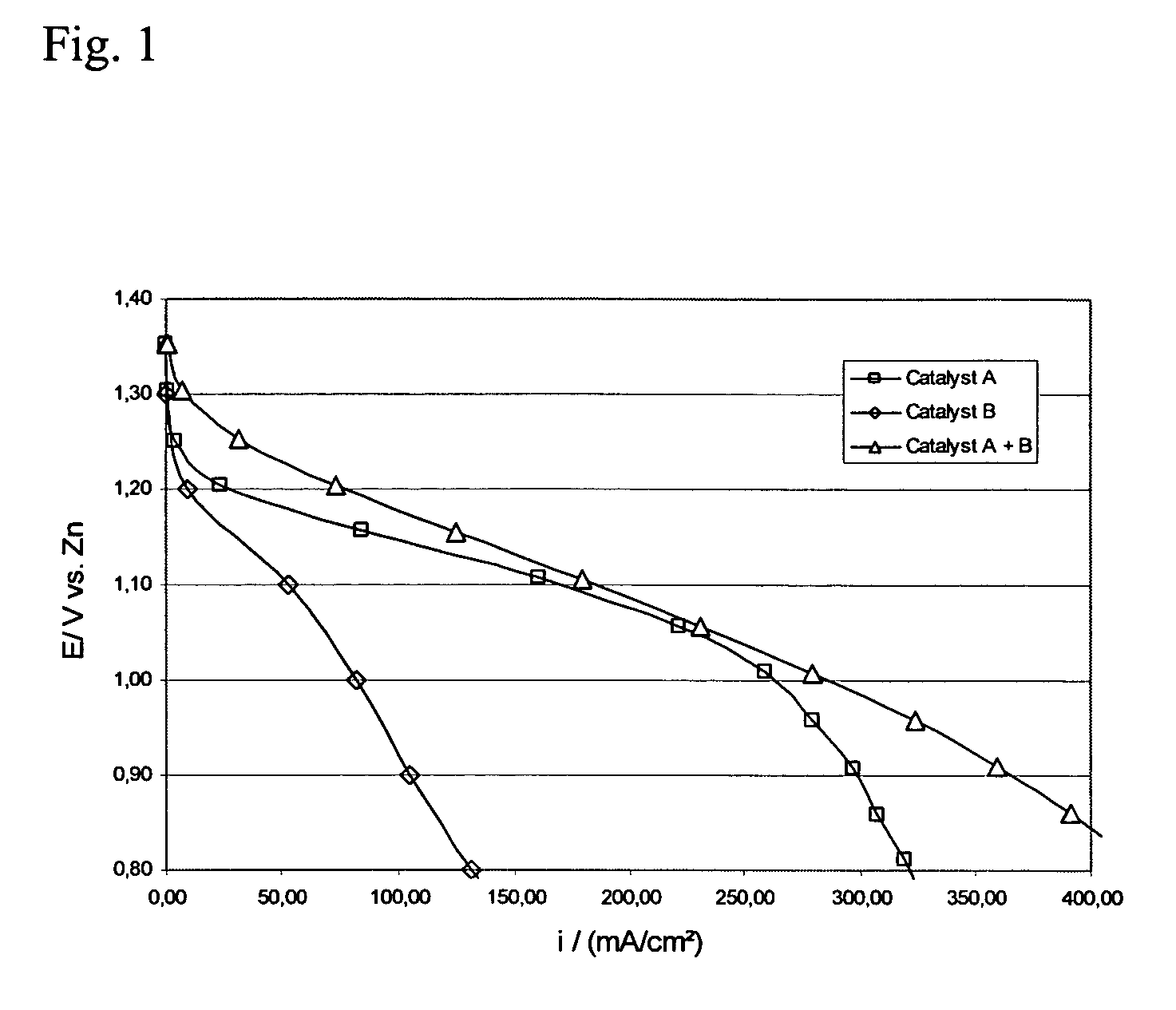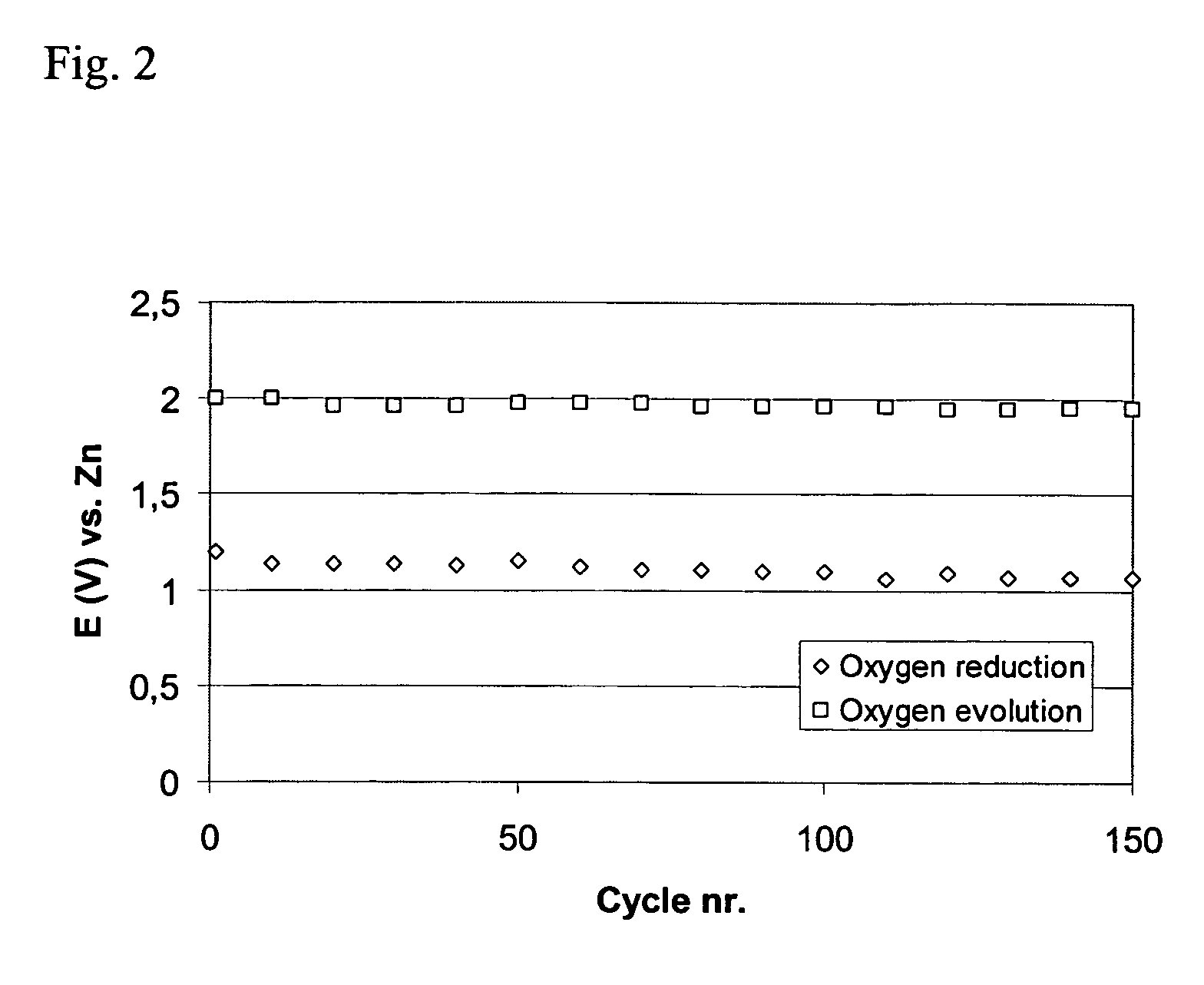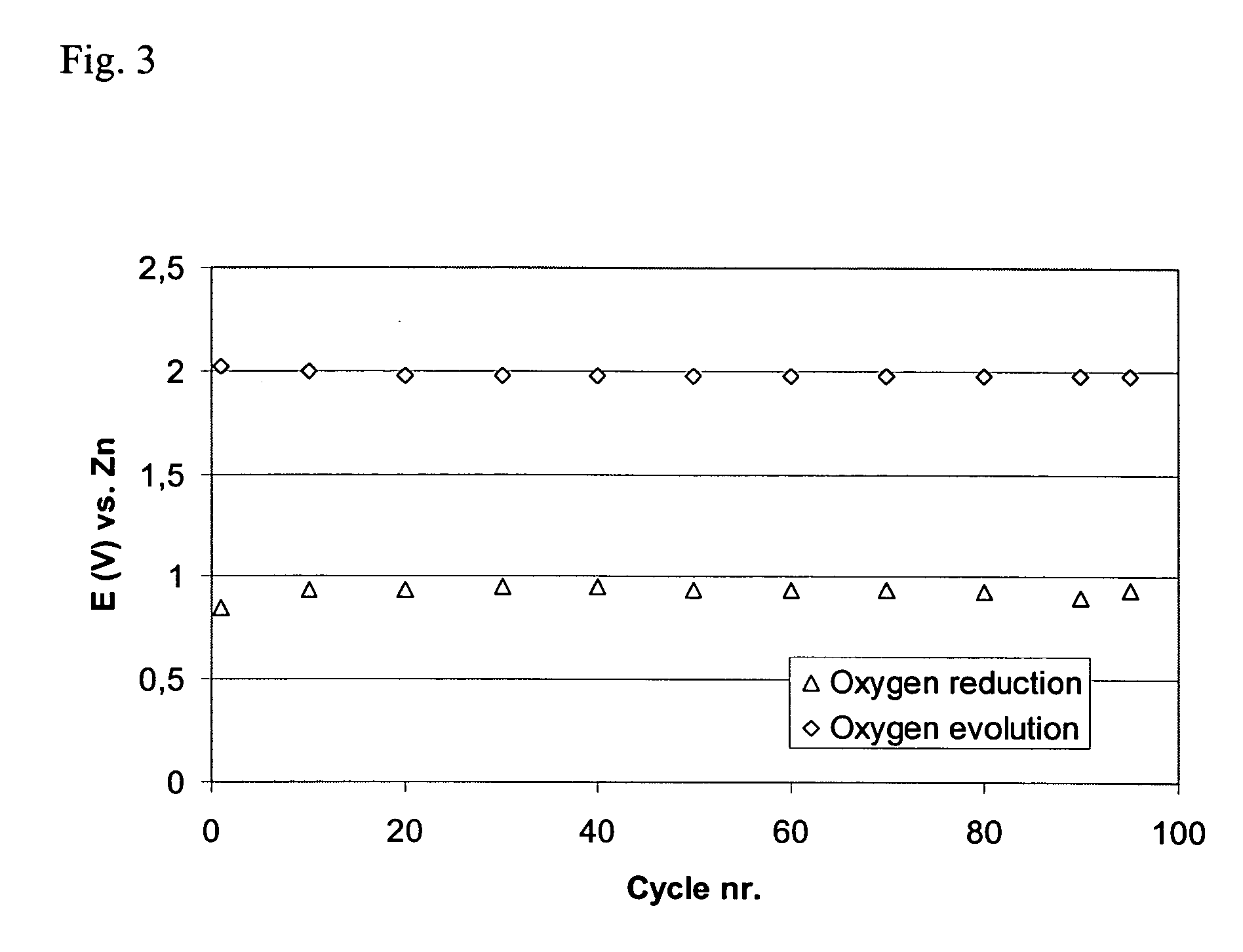Bifunctional air electrode
a bifunctional, air electrode technology, applied in the manufacture of electrodes, cell components, electrochemical generators, etc., can solve the problems of destroying the carbon structure or the binding materials used, and affecting the performance of the electrod
- Summary
- Abstract
- Description
- Claims
- Application Information
AI Technical Summary
Benefits of technology
Problems solved by technology
Method used
Image
Examples
example 1
[0058] This example shows that the use of an oxygen reduction catalyst in combination with a bifunctional catalyst increases the rate of oxygen reduction and the cycle life of the bifunctional electrode. MnSO4 was selected as the oxygen reduction catalyst and La2O3 was selected as the bifunctional catalyst.
[0059] Air electrodes were prepared using high surface area carbon, the catalysts in the form of powders and PTFE suspension.
[0060] The active layer was prepared using 15 wt % PTFE as a suspension containing 60 weight % PTFE in a water dispersion (Aldrich), 63.5 wt % high surface area carbon (XC500, Cabot Corporation) and the electrocatalysts: 13 wt % manganese sulfate (MnSO4, Prolabo) and 8.5 wt % lanthanum oxide (La2O3, Merck). As a first step, high surface area carbon was mixed with both catalysts in water. Separately, PTFE suspension was mixed with water. Then, the PTFE solution was added to the carbon solution and the materials were mixed and agglomerated into a slurry. The...
example 2
[0068] This example shows the activity and stability of air electrodes when MnO2 is used as the oxygen reduction catalyst combined with La2O3 as the bifunctional catalyst. Air electrodes were prepared using high surface area carbon, powdered catalysts and PTFE suspension.
[0069] The active layer was prepared using 15 wt % PTFE as a suspension containing 60 weight % PTFE in a water dispersion (Aldrich), 69 wt % high surface area carbon (XC500, Cabot Corporation) and the electrocatalysts: 8 wt % manganese oxide (MnO2, Merck) and 8 wt % lanthanum oxide (La2O3, Merck). As a first step, high surface area carbon was mixed with both catalysts in water. Separately, PTFE suspension was mixed with water. Then, the PTFE solution was added to the carbon solution and the materials were mixed and agglomerated into a slurry. The slurry was then mixed in an ultrasonic bath for 30 minutes. The slurry was then dried at 300° C. for 3 hours to remove any surfactants. The dried mixture was then agglomer...
example 3
[0075] This example shows how the quantity of the catalyst affects the activity of the air electrode.
[0076] Several electrodes were made according to the electrode production procedure described in Examples 1 and 2 in which the amounts of the oxygen reduction catalyst and the bifunctional catalyst were varied.
[0077] For all electrodes high surface area carbon (XC500) and 20 wt % PTFE was used in the AL. The GDL was made according to the description given in Examples 1 and 2.
[0078] Table 1 shows how the amounts of the catalysts affect the stability of the electrodes.
TABLE 1Discharge voltage and charge / dischargestability of bifunctional air electrodes.Wt % / Wt % / Discharge Voltage / MnSO4MnO2Wt % / La2O3Capacity / Ah(1)V vs Zn(2)1.608750.981308.53751.1840083.11.181201.631.30.96120403.11.101.6840.60.88088810.94040812.50.82
(1)The charge / discharge stability is reported as the total capacity of oxygen evolution or oxygen reduction.
(2)The discharge voltage is reported as the stable voltage a...
PUM
 Login to View More
Login to View More Abstract
Description
Claims
Application Information
 Login to View More
Login to View More - R&D
- Intellectual Property
- Life Sciences
- Materials
- Tech Scout
- Unparalleled Data Quality
- Higher Quality Content
- 60% Fewer Hallucinations
Browse by: Latest US Patents, China's latest patents, Technical Efficacy Thesaurus, Application Domain, Technology Topic, Popular Technical Reports.
© 2025 PatSnap. All rights reserved.Legal|Privacy policy|Modern Slavery Act Transparency Statement|Sitemap|About US| Contact US: help@patsnap.com



